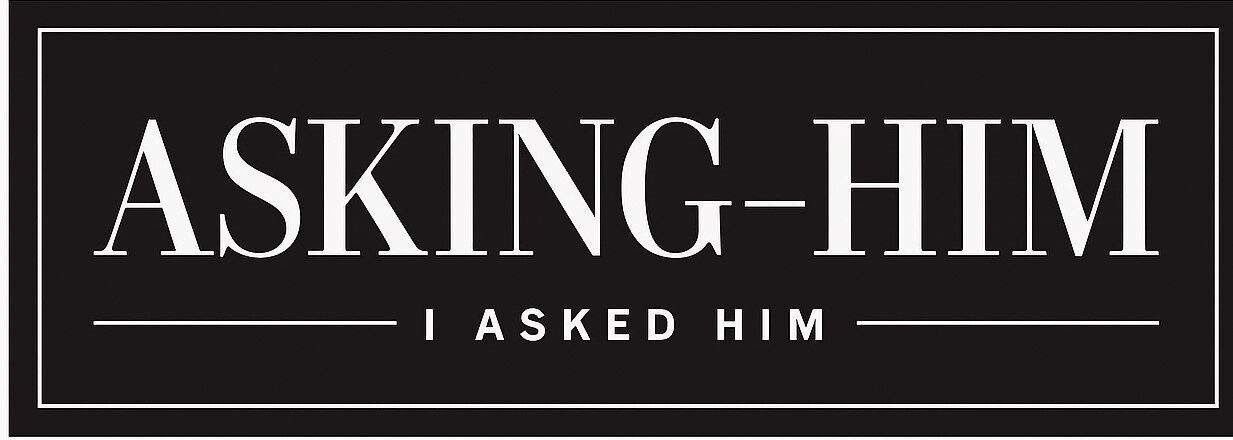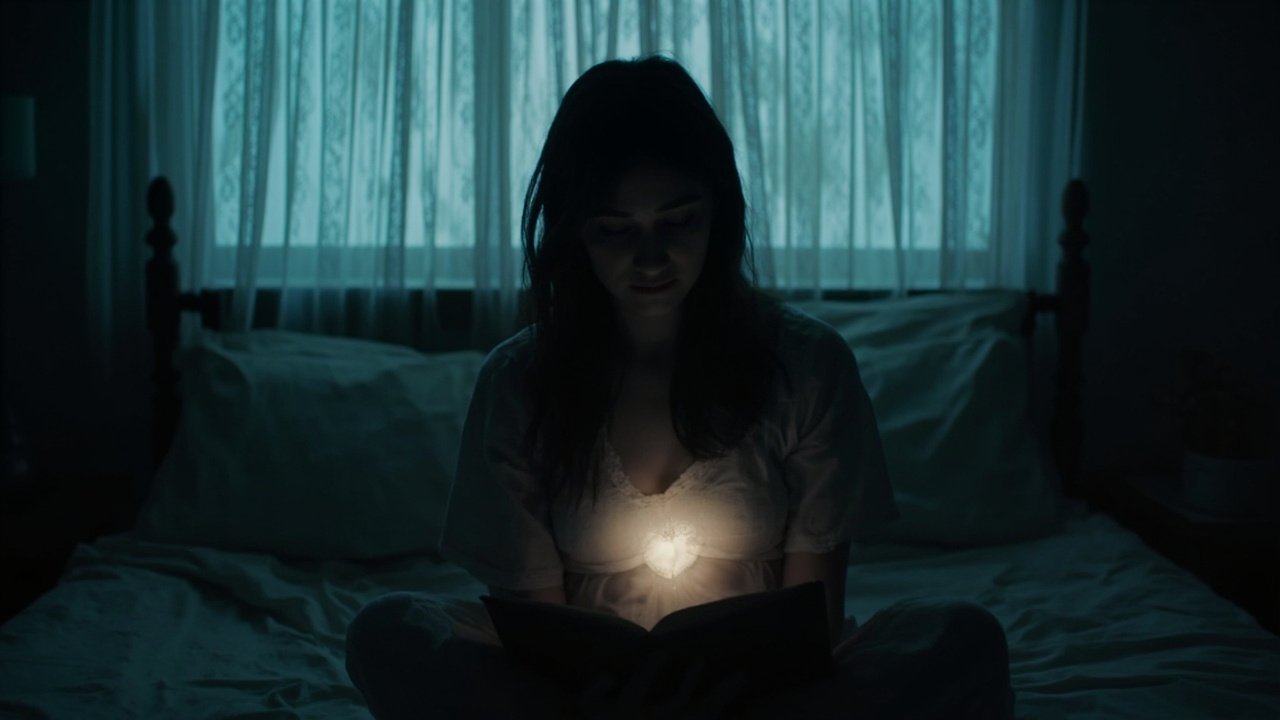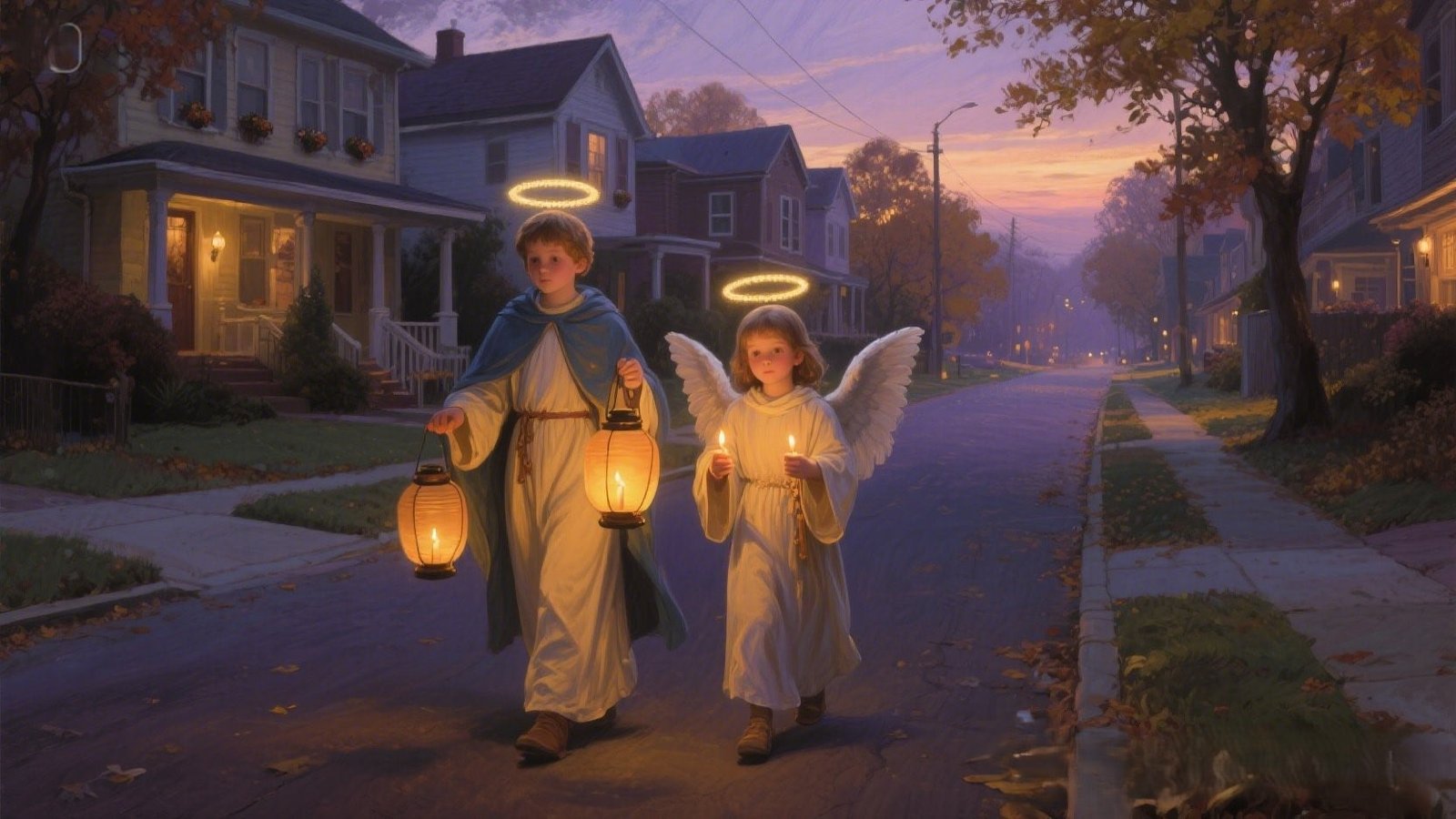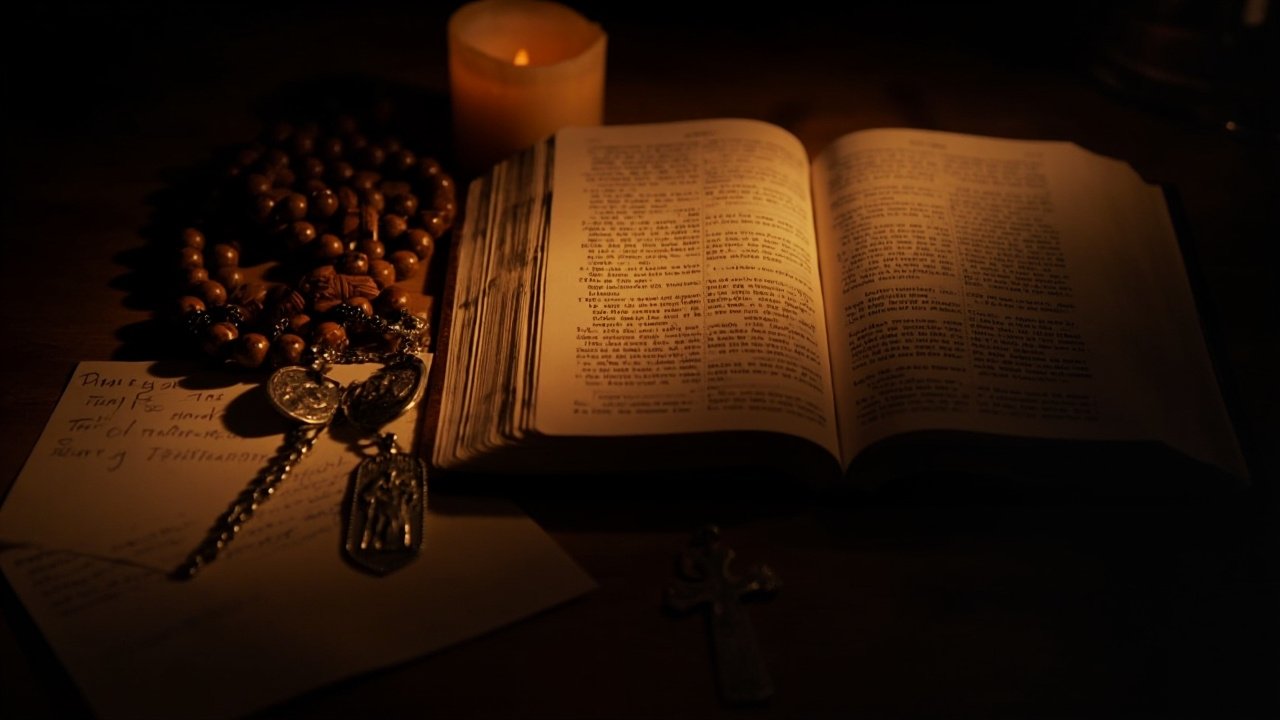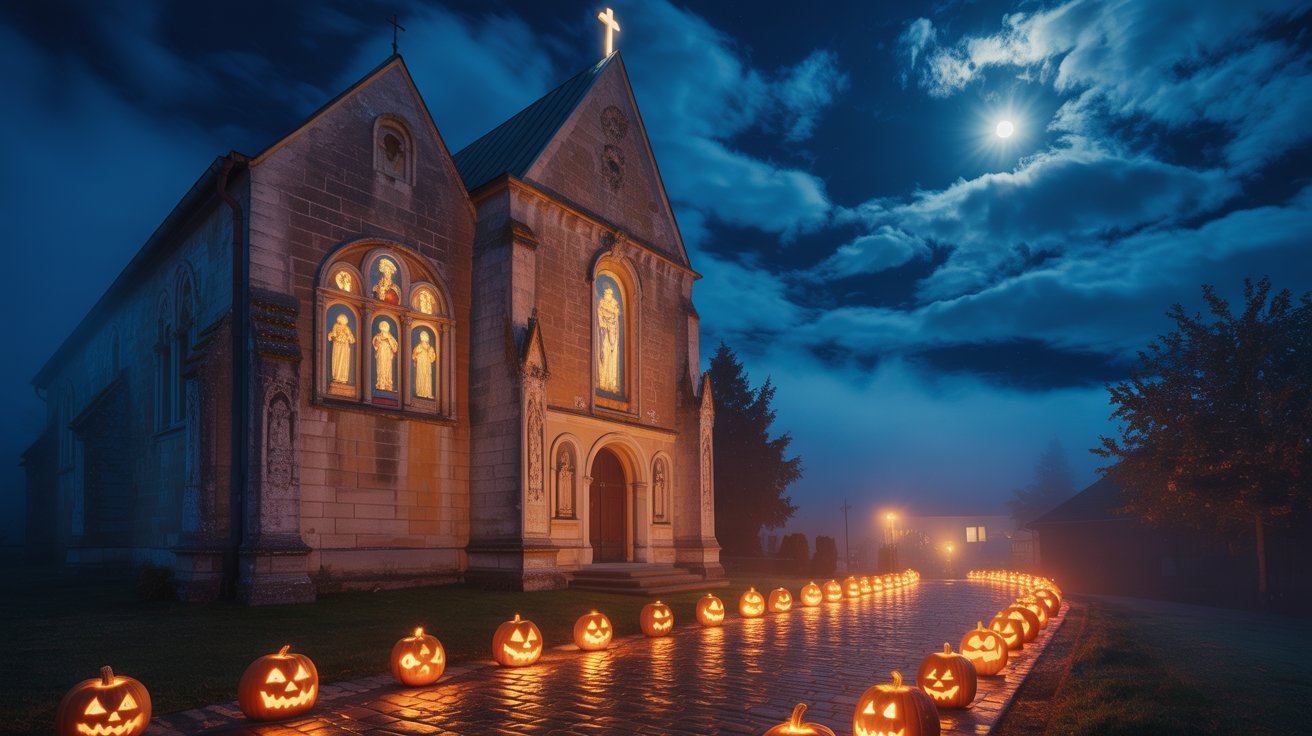
The True Story of Halloween — Faith Over Fear
(Part 3 of the “Unmasking Halloween” Series)
The War for the Soul of October 31Every story has layers—truth, myth, and the lies that try to rewrite both. Halloween is no different. It’s a night that pulses with contradiction: a sacred vigil, a pagan ritual, a modern spectacle. Some call it a celebration of darkness. Others call it a triumph of light. And then there are those who claim it as their own, draping it in shadows that were never there to begin with.
This is the story of Halloween—what it was, what it became, and what it still could be. It’s a tale of fear and faith, of saints and sinners, and of a victory that no lie can undo. So grab a seat by the fire, because this isn’t just history—it’s a battle, and the stakes are eternal.
When the World Trembled in the Dark
Long before jack-o’-lanterns grinned on porches, before candy buckets and costume parties, there was a people who lived by the rhythm of the earth. The Celts of ancient Europe didn’t have streetlights or smartphones. Their world was raw—fields of green, skies of gray, and nights so dark you could feel the unseen watching you. They called their year’s end Samhain, a Gaelic word that hums with mystery, marking the moment when summer bled into winter, when the harvest was gathered, and the cold began to bite.
For the Celts, Samhain wasn’t a party. It was survival. They believed the veil between the living and the dead grew thin, like a threadbare curtain letting spirits slip through. Bonfires roared to ward off restless souls. Food was left on doorsteps, not for trick-or-treaters, but to appease whatever wandered in the dark. Masks weren’t for fun—they were disguises to fool malevolent spirits. This wasn’t devil worship; it was fear, plain and simple. The Celts weren’t evil—they were human, clinging to rituals in a world where death felt like a predator waiting just beyond the firelight.
The word pagan gets thrown around like an insult today, but back then, it just meant paganus—Latin for “people of the land.” The Celts worshiped what they could touch: the sun, the harvest, the seasons. They feared what they couldn’t see: the spirits, the unknown, the grave. Samhain was their cry into the void, a plea for protection in a world that offered no redemption. But then, a new story arrived.
When Light Stepped Into the Shadows
Enter the Gospel—news so radical it rewrote the world. When Christian missionaries reached the Celts, they didn’t come with swords or scorn. They came with a story: a God who became man, who faced death and broke its chains. “The last enemy to be destroyed is death,” Paul wrote in 1 Corinthians 15:26, and the missionaries carried that truth like a torch.
They saw the Celts’ fear and answered it with hope. They saw their bonfires and spoke of a light that never fades. They saw their offerings to spirits and pointed to a cross that had already paid the price. The Church didn’t erase Samhain—it redeemed it.
In the 7th century, Pope Boniface IV took a bold step. The Pantheon in Rome, once a temple to every false god under the sun, was transformed into a church dedicated to the Virgin Mary and all martyrs. It was a declaration: the old powers have no authority here. Light has come. By the 8th century, Pope Gregory III set November 1 as All Saints’ Day, a feast to honor the holy ones who had gone before, who now stood in God’s presence. The night before became All Hallows’ Eve—Hallow meaning “holy,” a word that carries the weight of heaven.
This was the Church’s genius: not destruction, but transformation. Samhain’s fear of death became a vigil of victory. Bonfires were replaced with candles lit in prayer. Offerings to spirits gave way to intercessions for souls. All Hallows’ Eve wasn’t about hiding from the dark—it was about mocking it, proclaiming Christ’s triumph over every power and principality. As Colossians 2:15 declares, “He disarmed the rulers and authorities and put them to open shame, by triumphing over them in him.
”Halloween, in its earliest Christian form, was a hymn of defiance: death has no sting, the grave has no victory (1 Corinthians 15:55). It was the Church saying, “We don’t fear the night—because the Light has already won.”
When Memory Faded and Shadows Returned
But truth is fragile when memory fails. Over centuries, the meaning of All Hallows’ Eve began to blur. The Protestant Reformation, with its rejection of praying for the dead, unraveled some of the theology that held the vigil together. By the time Irish immigrants brought their Halloween customs to America in the 19th century, the holiday was a patchwork of traditions—bonfires, costumes, and harvest feasts—stripped of their sacred roots.
Then came the modern world. Hollywood saw a chance to sell tickets, and where the Church once placed candles, studios placed monsters. Skeletons danced in place of saints. Ghost stories replaced prayers. What was once a night of triumph became a playground for make-believe horror. And into that hollowed-out shell, something else crept in.
When the Thief Tried to Steal the Night
In 1966, a man named Anton LaVey stood in San Francisco and declared himself the high priest of the Church of Satan. He looked at Halloween—its masks, its revelry, its flirtation with the macabre—and saw an opportunity. He called it the Satanists’ “high day,” not because demons were stronger, but because people were weaker. On Halloween, he said, the world embraced indulgence, rebellion, and the thrill of the forbidden. It was the perfect stage for his philosophy.
But let’s be clear: LaVey’s Satanism wasn’t about summoning demons or chanting in crypts. It was about worshipping the self. His followers didn’t bow to a horned figure—they bowed to their own desires, calling it freedom. “Do what thou wilt,” LaVey preached, echoing the oldest lie in the book: “You will be like God” (Genesis 3:5). Every ritual they perform, every symbol they invert, is a parody of something holy. Satanists don’t create—they corrupt. They don’t build—they borrow.
LaVey didn’t invent Halloween. He didn’t even understand it. He saw a night the world had already misunderstood and claimed it as his own. It’s the oldest trick in the enemy’s playbook: take what God made good, twist its meaning, and call it yours. As Jesus warned, “The thief comes only to steal and kill and destroy” (John 10:10). Halloween, a night born to celebrate Christ’s victory, was hijacked by a lie that thrives on distraction.
Debunking the Myths That Cloud the Truth
The enemy loves confusion, and Halloween is shrouded in it. Myths have piled up over the years, fueled by fear, ignorance, and pop culture. Let’s unravel a few of the biggest ones and set the record straight with truth—because “you will know the truth, and the truth will set you free” (John 8:32).
Myth 1: Halloween Is a Pagan Holiday That Christians Stole
The story goes that Christians hijacked Samhain to trick pagans into converting. Not quite. The Celts’ Samhain was a cultural practice, not a religious mandate, and it varied across regions. When the Church established All Saints’ Day, it wasn’t about co-opting a pagan festival—it was about redeeming a human fear. The Celts feared death; the Church offered resurrection. Samhain’s rituals were transformed, not stolen, into a celebration of Christ’s victory over the grave. Think of it like turning a sword into a plowshare (Isaiah 2:4)—same material, new purpose.
Myth 2: Halloween Is Inherently Evil and Demonic
Some Christians shudder at Halloween, seeing it as a gateway to the occult. But this fear often comes from misunderstanding its roots. Samhain wasn’t “evil”—it was a pre-Christian attempt to make sense of mortality. The Church didn’t adopt it to flirt with darkness but to proclaim that “the light shines in the darkness, and the darkness has not overcome it” (John 1:5). Costumes and jack-o’-lanterns? Those started as Christian symbols—mocking evil spirits and honoring saints. The evil lies not in the holiday but in forgetting its meaning.
Myth 3: Satanists Own Halloween
Anton LaVey’s claim that Halloween is the Satanists’ “high day” has stuck in the cultural imagination, but it’s a hollow boast. Satanists have no historical or spiritual claim to October 31. Their rituals are modern inventions, not ancient traditions. They thrive on Halloween’s secular confusion, not its sacred origins. To believe they “own” it is to hand them a victory they haven’t earned. The night belongs to the One who said, “I am the resurrection and the life” (John 11:25), not to a movement that mimics and mocks.
Myth 4: Halloween Celebrates Death
This one’s pervasive, thanks to horror movies and haunted houses. But Halloween—at its core—was never about glorifying death. It was about defying it. All Hallows’ Eve was a vigil to honor the saints who conquered death through faith, to pray for souls, and to celebrate Christ’s empty tomb. The skeletons and ghosts of today’s Halloween are caricatures, not truths. The real holiday points to life eternal, where “death shall be no more” (Revelation 21:4).These myths are the enemy’s smoke and mirrors, designed to obscure the truth. Halloween isn’t pagan, evil, or Satanic—it’s a Christian story, buried under centuries of distortion.
The Truth That Shatters the Lie
Here’s where the story turns. Halloween isn’t Satan’s day—it never was. It’s a night rooted in the Church’s bold proclamation that death is defeated, that the powers of darkness have no claim. When Christ rose from the tomb, he “abolished death and brought life and immortality to light through the gospel” (2 Timothy 1:10). Every bonfire lit on Samhain, every costume worn to fool spirits, every Satanic ritual that mocks the holy—all of it is answered by the empty tomb.
Satanists can’t create holidays. They can’t even create their own symbols. Their inverted crosses, their pentagrams, their rituals—they’re all shadows of something real, something sacred. As C.S. Lewis once wrote, the devil is a parasite, not an originator. He can only twist what God has made. And Halloween? It’s God’s story, not his.
The real battle for October 31 isn’t about banning costumes or burning candy. It’s about memory. Will we remember what this night was meant to be—a celebration of the saints, a defiance of death, a candle in the dark? Or will we let it stay a hollow spectacle, a stage for lies to strut?
Reclaiming the Night
So here we are, standing on the edge of another Halloween. The world will dress up, carve pumpkins, and tell ghost stories. Some will call it harmless fun. Others will call it dangerous. But the truth is bigger than both.
Halloween is a battlefield, not because it’s evil, but because it’s contested. It’s a night that dares us to remember: to light a candle, to pray for the saints, to laugh in the face of death. It’s a chance to tell our children that the monsters aren’t real, but the victory is. It’s a moment to reclaim what was stolen, to restore what was lost.
“The light shines in the darkness, and the darkness has not overcome it” (John 1:5). That’s the heartbeat of All Hallows’ Eve. It’s not a night to fear—it’s a night to celebrate. To pray. To remember that the One who conquered the grave is still King, and no lie, no myth, no distortion can change that.
So this October 31, don’t hide. Don’t retreat. Light a candle. Tell the story. And walk boldly into the night, knowing the battle is already won.
